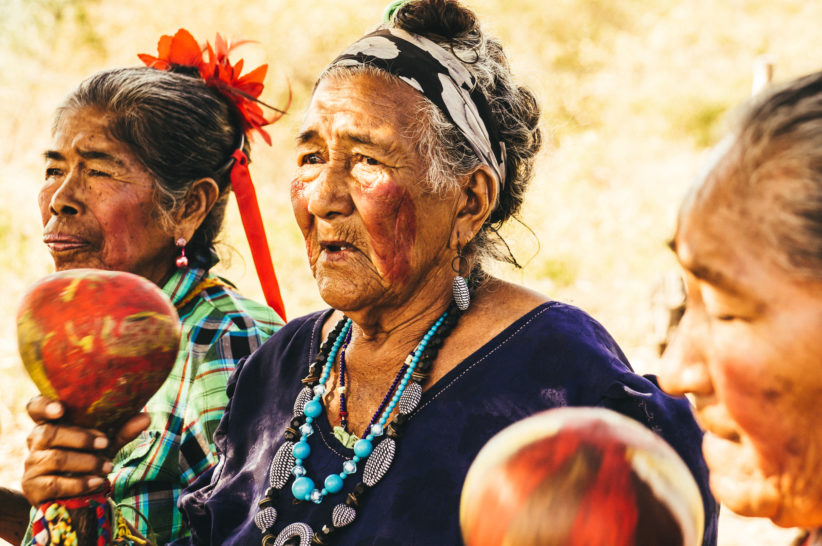The Tribes of Paraguay
In mid-2012 two deforestation companies based in Brazil purchased large swathes of the Paraguayan Chaco forest plain. This arid, sparsely populated, sparely forested region that spans across large portions of northern Paraguay was internationally recognised as one of the last remaining bastions of untouched and undisturbed Native Indian tribal life in South America and indeed, the planet as whole.
For thousands of years, groups of people have lived in the Chaco forest unchanged by modern technology and the onset of post-colonialism in South America. So, when evidence was found pointing to yet another undiscovered and hitherto unknown tribal civilisation living in the newly purchased Chaco region of 2012, the international community urged the Paraguayan government to pull the plug on further deforestation projects in the region.
But, while the fate of the unknown tribesmen is still very much in question, and the onslaught of commercial logging in the region continues to eat up huge sections of the Chaco plains for cattle farming and timber production, one thing is for certain; Paraguay’s back country still retains some of the untamed and unchartered pockets of wilderness that offer the perfect setting for indigenous peoples to continue to thrive and grow as modernism too grows up in the cities all around it, and that these enclaves need protection and conservation more than ever before.
While many people derive some hope from the 2012 indications that there are still some truly isolated tribes in the Paraguayan Chaco, others point to the fate of the country’s numerous other indigenous populations that have either been destroyed, forcibly displaced or inadvertently bought into the modern fold by the various activities of today’s humans in South America.
There are however, still a number of tribal groups and indigenous peoples that continue to live shoulder-to-shoulder with Paraguay’s new cityscapes and modernised populations. Many have retained defining cultural characteristics and identify themselves with traditional practices in areas like arts & crafts, language, music, poetry and day-to-day life.
Ayoreo People

In the Chaco, the Ayoreo people have traditionally lived in the valleys and hills nestled twixt the Pilcomayo and Paraguay River waterways. It could be said that the Ayoreo have one foot in the door and one foot out of modern Paraguayan society; they are represented in government by the Unión Nativa Ayoreo del Paraguay (UNAP), and have managed to secure assurances for their protection against deforestation in the Chaco (even though concerns are still raised in this regard), while still retaining their earthy and isolated way of life.
Guaraní People

Perhaps the largest of Paraguay’s indigenous tribe’s people however, is that of the Guaraní people. Strictly speaking the Guaraní represent a whole sub-set of indigenous Paraguayans all united by one common tongue that sets them apart from the other tribal categories in the country, but given their relative geographical proximity and close cultural relationship, the Guaraní are usually spoken of as one, single and collective indigenous group.
Traditionally the Guaraní lived in the lands east of the Paraguay River, nestled between what is now the Uruguayan border and the central waterways of the basin in the west. Before colonialism not much is known of the Guaraní, however today it’s easy to see the effect they have had on Paraguayan society; the language is learned both formally and informally and a majority of people in the country remain bilingual in Guaraní, while traditional tribal practices are still observed, practiced and protected by authorities in the government.
Chamacoco

Another indigenous tribe common to the Chaco tundra of north Paraguay is the Chamacoco Indian sub-group that, prior to western colonialism here, became powerful slave owners through the armed conquests of neighbouring tribes and a rigid militaristic social organisation that dominated the tribal hierarchy. In post-colonial times, the Chamacoco became largely assimilated into western capitalist models and were employed en masse in the lumber business that was coming to the economic fore in the Gran Chaco.
Chorote

Another tribe known as the Chorote suffered during the Paraguay-Bolivian war of 1932, when they were suddenly forced to make exodus from the Chaco plains they had lived on for hundreds of years, to avoid being caught in the crossfire of guerrilla territory disputes. The Chorote were dispersed across the Christian missions of Paraguay and Argentina, where they sought refuge from the conflict.
Today, as more and more legislation is implemented in the country to protect the rights of indigenous people that have suffered at the hands of modernity, the Chorote, along with a huge cascade of other tribal groups, are gaining both recognition and representation in Paraguay’s official governmental circles, although the picture does remain, as ever, uncertain.

